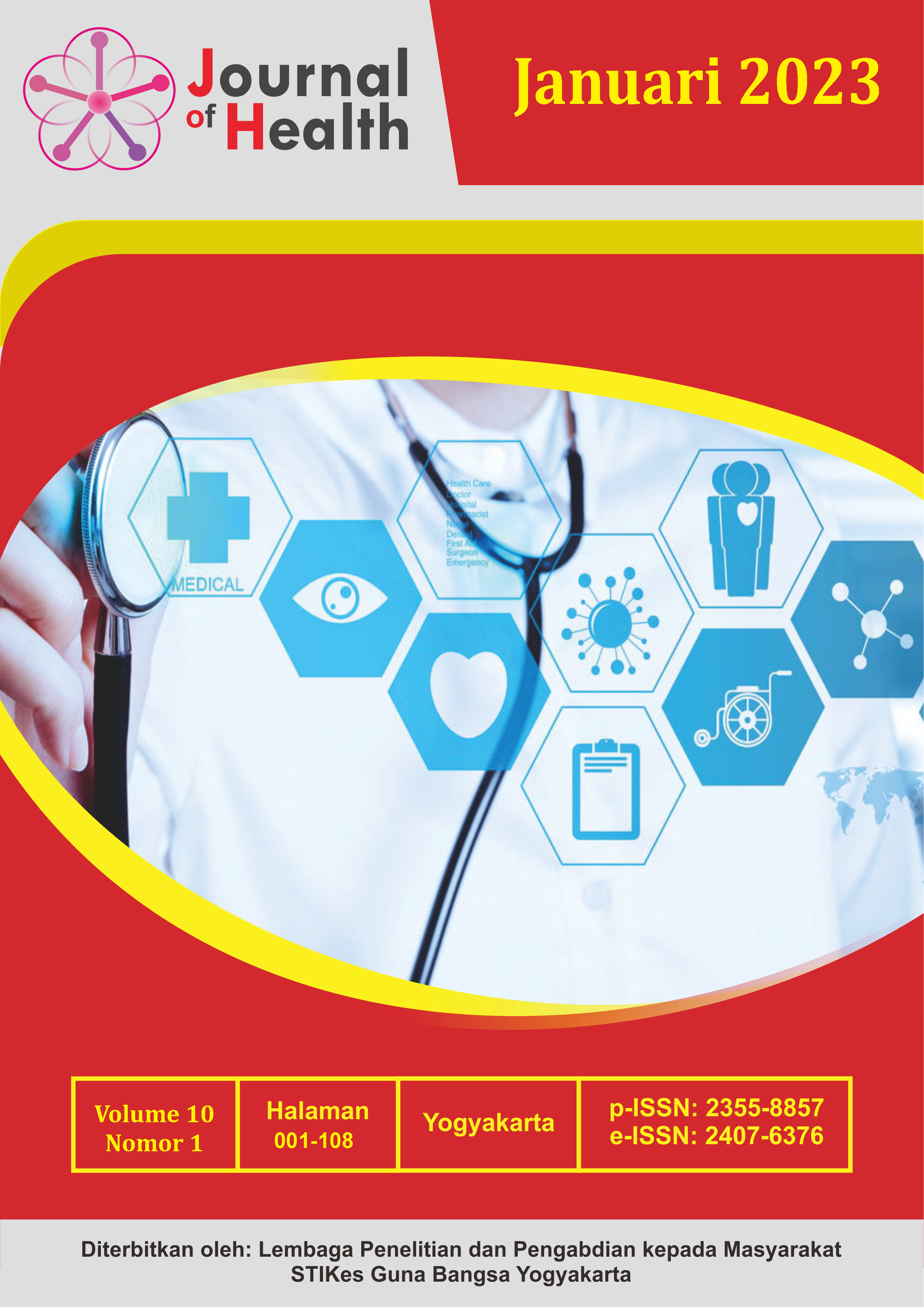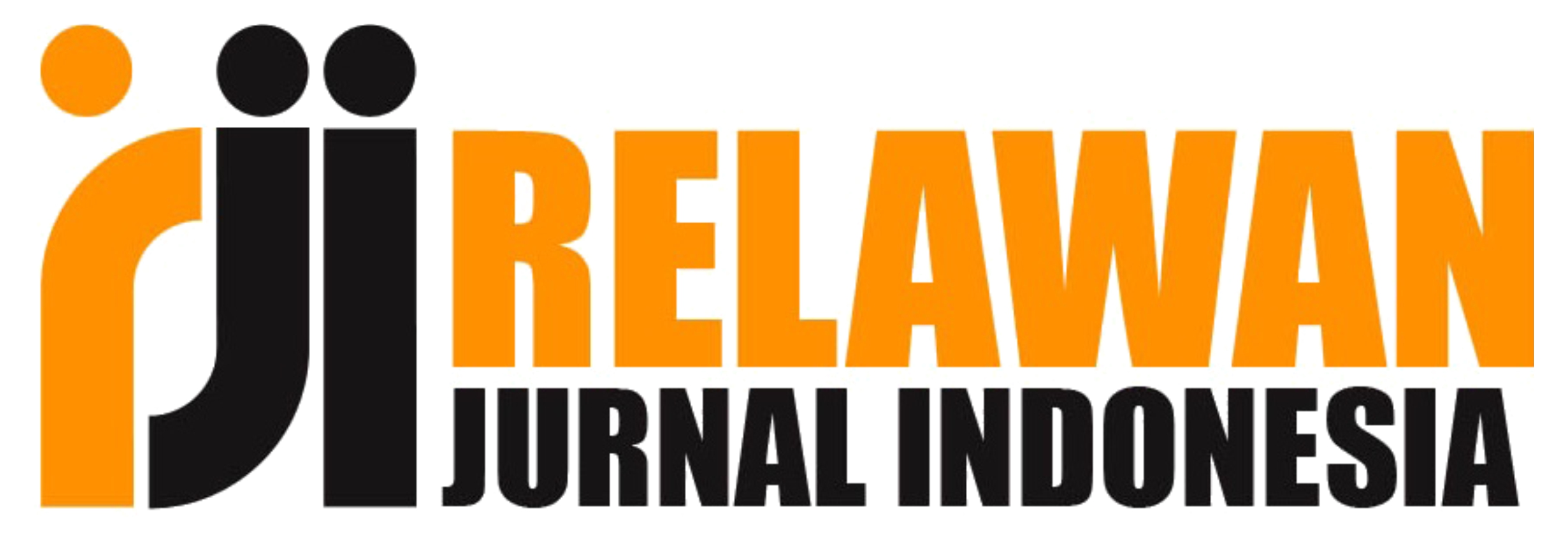The Effectivenes of the Use of Maternity Classes on Decision Making In Maternal and Child Health Service in Klaten Regency
Abstract
Background : Not yet optimal decision making in maternal and child health services which includes the use of MCH books, antenatal care visits, adherence of pregnant women in consuming iron tablets, Incomplete charging BPCR and self efficacy pregnancy , may be one of the contributing indirecy cause maternal death. One of the government programs to reduce maternal mortality and improve the health of pregnant women is to hold classes for pregnant women. The research objective was to determine the effectiveness of the use of pregnant women’s classes on decision making in maternal and child health services. Methods: The research design used was a true experimental design with a posttest only control design. The research sample was 130 pregnant Results: Classes for pregnant are effective in increasing use of the MCH book, compliance with ANC visits, completeness of BPCR and compliance with taking iron tablets , implementation of classes for pregnant was not effective in increasing self efficacy . The results showed that pregnant who attend classes for pregnant women could increase the MCH by 5,94 times after controlling for the parity variable, can increase adherence to ANC Visits 10,97 times after controlling for age, maternal education and health insurance, can increase the completeness of BPCR by 16,58 times after controlling for the parity variable, can increase adherence to taking iron tablets by 13,82 times after controlling for parity variables Conclusion : implementation of the class for pregnant women is effective in increasing decision making in maternal and chold health services.
Downloads
References
Annoon, Y., Hormenu, T., Ahinkorah, B. O., Seidu, A. A., Ameyaw, E. K. & Sambah, F. (2020) Perception of pregnant women on barriers to male involvement in antenatal care in Sekondi, Ghana. Heliyon, 6(7): e04434.
Azhar, K., Dharmayanti, I., Tjandrarini, D. H. & Hidayangsih, P. S. (2020) The influence of pregnancy classes on the use of maternal health services in Indonesia. BMC Public Health, 20(1): 1-9.
Baroroh, I., Jannah, M. & Meikawati, P. R. (2017) Hubungan pengetahuan ibu hamil dengan keikutsertaan kelas ibu hamil di Wilayah Kerja Puskesmas Jenggot Kota Pekalongan. . Siklus: Journal Research Midwifery Politeknik Tegal, 6(2): 212-217.
Fuada, N. & Setyawati, B. (2015) Pelaksanaan kelas ibu hamil di Indonesia. Indonesian Journal of Reproductive Health, 6(2): 67-75.
Harsanto, A. N. & Cahyanti, R. D. (2015) Pengaruh kelas ibu hamil terhadap tingkat pengetahuan ibu tentang buku kesehatan ibu dan anak Media Medika Muda, 4(4): 273-281.
Juwita, S. (2015) Pengambilan Keputusan Rujukan ke Rumah Sakit pada Ibu Hamil berisiko Tinggi dalam Perspektif Gender. Disertasi, UNS (Sebelas Maret University).
Kaspirayanthi, N. K. D., Suarniti, N. W. & Somoyani, N. K. (2019) Hubungan keikutsertaan ibu dalam kelas ibu hamil dengan pengetahuan mengenai tanda bahaya kehamilan dan persalinan di Wilayah Kota Denpasar. Jurnal Ilmiah Kebidanan (The Journal Of Midwifery), 7(2): 116-127.
Kemenkes RI (2011) Pedoman Pelaksanaan Kelas Ibu Hamil, Jakarta:Departemen Kesehatan Republik Indonesia.
Kementerian Kesehatan RI (2015) Keputusan Menteri Kesehatan RI Nomor HK.02.02/MENKES/52/2015 Tentang Rencana Strategis Kementerian Kesehatan Tahun 2015-2019, Jakarta:Kementerian Kesehatan Republik Indonesia.
Kementrian Kesehatan RI (2014a) Pedoman Pelaksanaan Kelas Ibu Hamil, Jakarta:Kementrian Kesehatan Republik Indonesia.
Kementrian Kesehatan RI (2015) Petunjuk Teknis Penggunaan Buku Kesehatan Ibu dan Anak, Jakarta:Kementrian kesehatan Republik Indonesia dan JICA.
Khofidzoh, A., Rahfiludin, M. Z. & Kartasurya, M. I. (2016) Hubungan keikutsertaan kelas ibu hamil dengan perilaku ibu dalam perawatan masa nifas (Studi di Puskesmas Cepiring Kabupaten Kendal),". Jurnal Kesehatan Masyarakat (Undip), 4(3): 11.
Sasnitiari, N. Y., Supliyani, E., Rosaria, Yohana, W. & Puspitasari, D. A. (2017) Hubungan keikutsertaan ibu dalam kelas ibu hamil dengan pengetahuan dan sikap terhadap tanda bahaya dalam kehamilan di Kota Bogor. Jurnal Kesehatan Reproduksi 8(2): 175-185.
World Health Organization (2015) Trends in maternal mortality: 1990-2015: estimates from WHO, UNICEF, UNFPA, World Bank Group and the United Nations Population Division, Geneva:World Health Organization.
Copyright (c) 2023 YENI NURUL RATMAWATI RATMAWATI, dr. Bima Suryantara, SpOG(K), Dr. Heni Puji Wahyuningsih,S.SiT,M.Keb

This work is licensed under a Creative Commons Attribution 4.0 International License.
Authors who publish with this journal agree to the following terms:
- Authors retain copyright and grant the journal right of first publication with the work simultaneously licensed under a Creative Commons Attribution License (CC-BY), that allows others to share the work with an acknowledgment of the work's authorship and initial publication in this journal.
- Authors are able to enter into separate, additional contractual arrangements for the non-exclusive distribution of the journal's published version of the work (e.g., post it to an institutional repository or publish it in a book), with an acknowledgment of its initial publication in this journal.
- Authors are permitted and encouraged to post their work online (e.g., in institutional repositories or on their website) prior to and during the submission process, as it can lead to productive exchanges, as well as earlier and greater citation of published work (See The Effect of Open Access).












